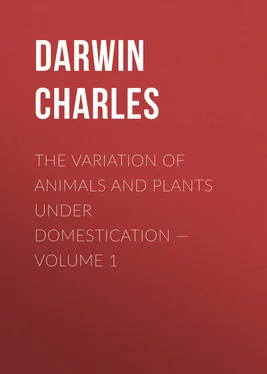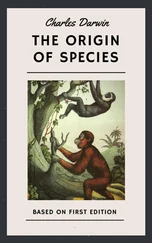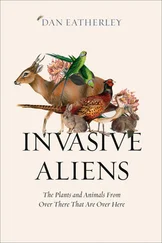Charles Darwin - The Variation of Animals and Plants under Domestication — Volume 1
Здесь есть возможность читать онлайн «Charles Darwin - The Variation of Animals and Plants under Domestication — Volume 1» — ознакомительный отрывок электронной книги совершенно бесплатно, а после прочтения отрывка купить полную версию. В некоторых случаях можно слушать аудио, скачать через торрент в формате fb2 и присутствует краткое содержание. Жанр: foreign_antique, foreign_prose, на английском языке. Описание произведения, (предисловие) а так же отзывы посетителей доступны на портале библиотеки ЛибКат.
- Название:The Variation of Animals and Plants under Domestication — Volume 1
- Автор:
- Жанр:
- Год:неизвестен
- ISBN:нет данных
- Рейтинг книги:5 / 5. Голосов: 1
-
Избранное:Добавить в избранное
- Отзывы:
-
Ваша оценка:
- 100
- 1
- 2
- 3
- 4
- 5
The Variation of Animals and Plants under Domestication — Volume 1: краткое содержание, описание и аннотация
Предлагаем к чтению аннотацию, описание, краткое содержание или предисловие (зависит от того, что написал сам автор книги «The Variation of Animals and Plants under Domestication — Volume 1»). Если вы не нашли необходимую информацию о книге — напишите в комментариях, мы постараемся отыскать её.
The Variation of Animals and Plants under Domestication — Volume 1 — читать онлайн ознакомительный отрывок
Ниже представлен текст книги, разбитый по страницам. Система сохранения места последней прочитанной страницы, позволяет с удобством читать онлайн бесплатно книгу «The Variation of Animals and Plants under Domestication — Volume 1», без необходимости каждый раз заново искать на чём Вы остановились. Поставьте закладку, и сможете в любой момент перейти на страницу, на которой закончили чтение.
Интервал:
Закладка:
(FIGURE 5. HALF-LOP RABBIT. (Copied from E.S. Delamer's work.)
Certain characters are remarkably fluctuating, or are very feebly transmitted by domestic rabbits: thus, one breeder tells me that with the smaller kinds he has hardly ever raised a whole litter of the same colour: with the large lop-eared breeds "it is impossible," says a great judge (4/11. 'Journal of Horticulture' 1861 page 327. With respect to the ears see Delamer on 'Pigeons and Rabbits' 1854 page 141; also 'Poultry Chronicle' volume 2 page 499 and ditto for 1854 page 586.), "to breed true to colour, but by judicious crossing a great deal may be done towards it. The fancier should know how his does are bred, that is, the colour of their parents." Nevertheless, certain colours, as we shall presently see, are transmitted truly. The dewlap is not strictly inherited. Lop-eared rabbits, with their ears hanging down flat on each side of the face, do not transmit this character at all truly. Mr. Delamer remarks that, "with fancy rabbits, when both the parents are perfectly formed, have model ears, and are handsomely marked, their progeny do not invariably turn out the same." When one parent, or even both, are oar-laps, that is, have their ears sticking out at right angles, or when one parent or both are half-lops, that is, have only one ear dependent, there is nearly as good a chance of the progeny having both ears full-lop, as if both parents had been thus characterised. But I am informed, if both parents have upright ears, there is hardly a chance of a full-lop. In some half-lops the ear that hangs down is broader and longer than the upright ear (4/12. Delamer 'Pigeons and Rabbits' page 136. See also 'Journal of Horticulture' 1861 page 375.); so that we have the unusual case of a want of symmetry on the two sides. This difference in the position and size of the two ears probably indicates that the lopping results from the great length and weight of the ear, favoured no doubt by the weakness of the muscles consequent on disuse. Anderson (4/13. 'An Account of the different Kinds of Sheep in the Russian Dominions' 1794 page 39.) mentions a breed having only a single ear; and Professor Gervais another breed destitute of ears.
We come now to the Himalayan breed, which is sometimes called Chinese, Polish, or Russian. These pretty rabbits are white, or occasionally yellow, excepting their ears, nose, feet, and the upper side of the tail, which are all brownish-black; but as they have red eyes, they may be considered as albinoes. I have received several accounts of their breeding perfectly true. From their symmetrical marks, they were at first ranked as specifically distinct, and were provisionally named L. nigripes. (4/14. 'Proc. Zoolog. Soc.' June 23, 1857 page 159.) Some good observers thought that they could detect a difference in their habits, and stoutly maintained that they formed a new species. The origin of this breed is so curious, both in itself and as throwing some light on the complex laws of inheritance that it is worth giving in detail. But it is first necessary briefly to describe two other breeds: silver-greys or silver-sprigs generally have black heads and legs, and their fine grey fur is interspersed with numerous black and white long hairs. They breed perfectly true, and have long been kept in warrens. When they escape and cross with common rabbits, the product, as I hear from Mr. Wyrley Birch, of Wretham Hall, is not a mixture of the two colours, but about half take after the one parent, and the other half after the other parent. Secondly, chinchillas or tame silver-greys (I will use the former name) have short, paler, mouse or slate-coloured fur, interspersed with long, blackish, slate-coloured, and white hairs. (4/15. 'Journal of Horticulture' April 9, 1861 page 35.) These rabbits breed perfectly true. A writer stated in 1857 (4/16. 'Cottage Gardener' 1857 page 141.) that he had produced Himalayan rabbits in the following manner. He had a breed of chinchillas which had been crossed with the common black rabbit, and their offspring were either blacks or chinchillas. These latter were again crossed with other chinchillas (which had also been crossed with silver-greys), and from this complicated cross Himalayan rabbits were raised. From these and other similar statements, Mr. Bartlett (4/17. Mr. Bartlett in 'Proc. Zoolog Soc.' 1861 page 40.) was led to make a careful trial in the Zoological Gardens, and he found that by simply crossing silver-greys with chinchillas he could always produce some few Himalayans; and the latter, notwithstanding their sudden origin, if kept separate, bred perfectly true. But I have recently been assured the pure silver-greys of any sub-breed occasionally produce Himalayans.
The Himalayans, when first born, are quite white, and are then true albinoes; but in the course of a few months they gradually assume their dark ears, nose, feet, and tail. Occasionally, however, as I am informed by Mr. W.A. Wooler and the Rev. W.D. Fox, the young are born of a very pale grey colour, and specimens of such fur were sent me by the former gentleman. The grey tint, however, disappears as the animal comes to maturity. So that with these Himalayans there is a tendency, strictly confined to early youth, to revert to the colour of the adult silver-grey parent-stock. Silver-greys and chinchillas, on the other hand, present a remarkable contrast with the Himalayans in their colour whilst quite young, for they are born perfectly black, but soon assume their characteristic grey or silver tints. The same thing occurs with grey horses, which, as long as they are foals, are generally of a nearly black colour, but soon become grey, and get whiter and whiter as they grow older. Hence the usual rule is that Himalayans are born white and afterwards become in certain parts of their bodies dark-coloured; whilst silver-greys are born black and afterwards become sprinkled with white. Exceptions, however, and of a directly opposite nature, occasionally occur in both cases. For young silver-greys are sometimes born in warrens, as I hear from Mr. W. Birch, of a cream-colour, but these young animals ultimately become black. The Himalayans, on the other hand, sometimes produce, as is stated by an experienced amateur (4/18. 'Phenomenon in Himalayan Rabbits' in 'Journal of Horticulture' January 27, 1865 page 102.), a single black young one in a litter; and this, before two months elapse, becomes perfectly white.
To sum up the whole curious case: wild silver-greys may be considered as black rabbits which become grey at an early period of life. When they are crossed with common rabbits, the offspring are said not to have blended colours, but to take after either parent; and in this respect they resemble black and albino varieties of most quadrupeds, which often transmit their colours in this same manner. When they are crossed with chinchillas, that is, with a paler sub-variety, the young are at first pure albinoes, but soon become dark-coloured in certain parts of their bodies, and are then called Himalayans. The young Himalayans, however, are sometimes at first either pale grey or completely black, in either case changing after a time to white. In a future chapter I shall advance a large body of facts showing that, when two varieties are crossed both of which differ in colour from their parent-stock, there is a strong tendency in the young to revert to the aboriginal colour; and what is very remarkable, this reversion occasionally supervenes, not before birth, but during the growth of the animal. Hence, if it could be shown that silver-greys and chinchillas were the offspring of a cross between a black and albino variety with the colours intimately blended — a supposition in itself not improbable, and supported by the circumstance of silver-greys in warrens sometimes producing creamy-white young, which ultimately become black — then all the above given paradoxical facts on the changes of colour in silver-greys and in their descendants the Himalayans would come under the law of reversion, supervening at different periods of growth and in different degrees, either to the original black or to the original albino parent-variety.
Читать дальшеИнтервал:
Закладка:
Похожие книги на «The Variation of Animals and Plants under Domestication — Volume 1»
Представляем Вашему вниманию похожие книги на «The Variation of Animals and Plants under Domestication — Volume 1» списком для выбора. Мы отобрали схожую по названию и смыслу литературу в надежде предоставить читателям больше вариантов отыскать новые, интересные, ещё непрочитанные произведения.
Обсуждение, отзывы о книге «The Variation of Animals and Plants under Domestication — Volume 1» и просто собственные мнения читателей. Оставьте ваши комментарии, напишите, что Вы думаете о произведении, его смысле или главных героях. Укажите что конкретно понравилось, а что нет, и почему Вы так считаете.












